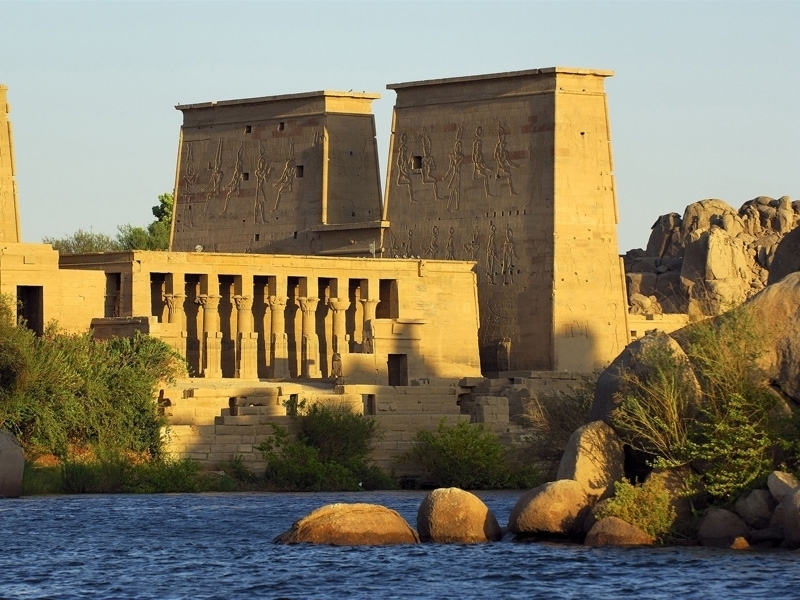Aswan, Egypt’s sunniest southern city and ancient frontier town located about 81 miles south of Luxor, has a distinctively African atmosphere. Its ancient Egyptian name was Syene. Small enough to walk around and graced with the most beautiful setting on the Nile, the pace of life is slow and relaxing. Days can be spent strolling up and down the broad Corniche watching the sailboats etc… the sky with their tall masts or sitting in floating restaurants listening to Nubian music and eating fresh caught fish.
In Aswan the Nile is at its most beautiful, flowing through amber desert and granite rocks, round emerald islands covered in palm groves and tropical plants. Explore the souk, full of the scent and color of spices, perfumes, scarves and baskets. View the spectacular sunsets while having tea on the terrace of the Old Cataract Hotel (Named due to the location of the Nile’s first cataract located here). Aswan has been a favorite winter resort since the beginning of the nineteenth century, and it’s still a perfect place to get away from it all.
Every night Nubian dancers and musicians perform in the Cultural Center, just off the Corniche. Folklore troupes recreate scenes from village life and perform the famous Nubian mock stick-fight dances.
The city proper lies on the east bank of the Nile. Relax here, visit a few mosques, but then prepare for an adventure. The bazaar runs along the Corniche, which continues past the Ferial Gardens and the Nubian Museum, and continues on to the Cemetery, with its forest of cupolas surmounted tombs from the Fatimid period. Just east of the cemetery in the famous area quarries is the gigantic Unfinished Obelisk. Just to the south of this, two Greco-Roman sarcophagi and an unfinished colossus remain half buried in the sand.
The most obvious is Elephantine Island, which is timeless with artifacts dating from pre-Dynastic times onward. It is the largest island in the area. Just beyond Elephantine is Kitchener’s Island (Geziret el-Nabatat). It was named for the British general Haratio Kitchener (185-916) and was sent to Egypt in 1883 to reorganize the Egyptian army, which he then led against the Sudanese Mahdi. But the island is known for its garden and the exotic plants the Kitchener planted there, and which continue to flourish today.
On the opposite shore (west bank), the cliffs are surmounted by the tomb of a marabut, Qubbet el-Hawwa, who was a local saint. Below are tombs of the local (pharoanic) nobles and dignitaries.
Upriver a bit is the tomb of Mohammed Shah Agha Khan who died in 1957. Known as the Tomb of the Agha Khan, it is beautiful in its simplicity. A road from there leads back to the Coptic Monastery of St Simeon, which was built in the sixth century in honor of Amba Hadra, a local saint.
Just up river a bit, there is also the old Aswan dam, built by the British, which was enlarged, expanded, but unable to control the Nile for irrigation.
- High Dam / Oblisk
Visit the high Dam which was completed in 1964, Obelisk.
- Philae Temple
Visit the Philae Temple which lies submerged most of the year by the waters of Lake Nasser. The main temple of Isis and its monuments were built between the 26th-dynasty and the Roman period. Return to the mainland.
- Nubian Village / Felucca Ride
Sail by felucca (Egyptian sail – boat) to the island of Agilki



 Your trustworthy partner
Your trustworthy partner